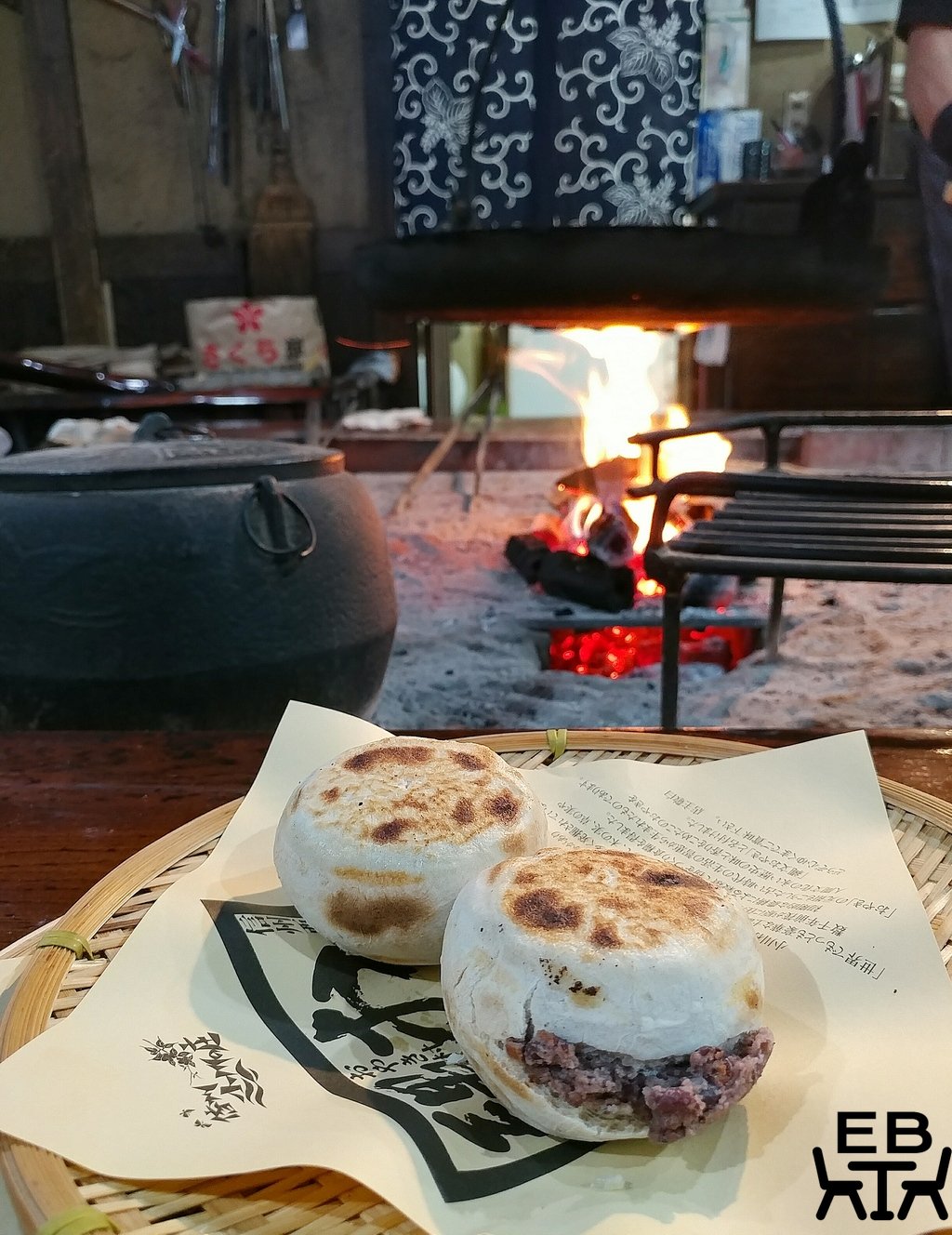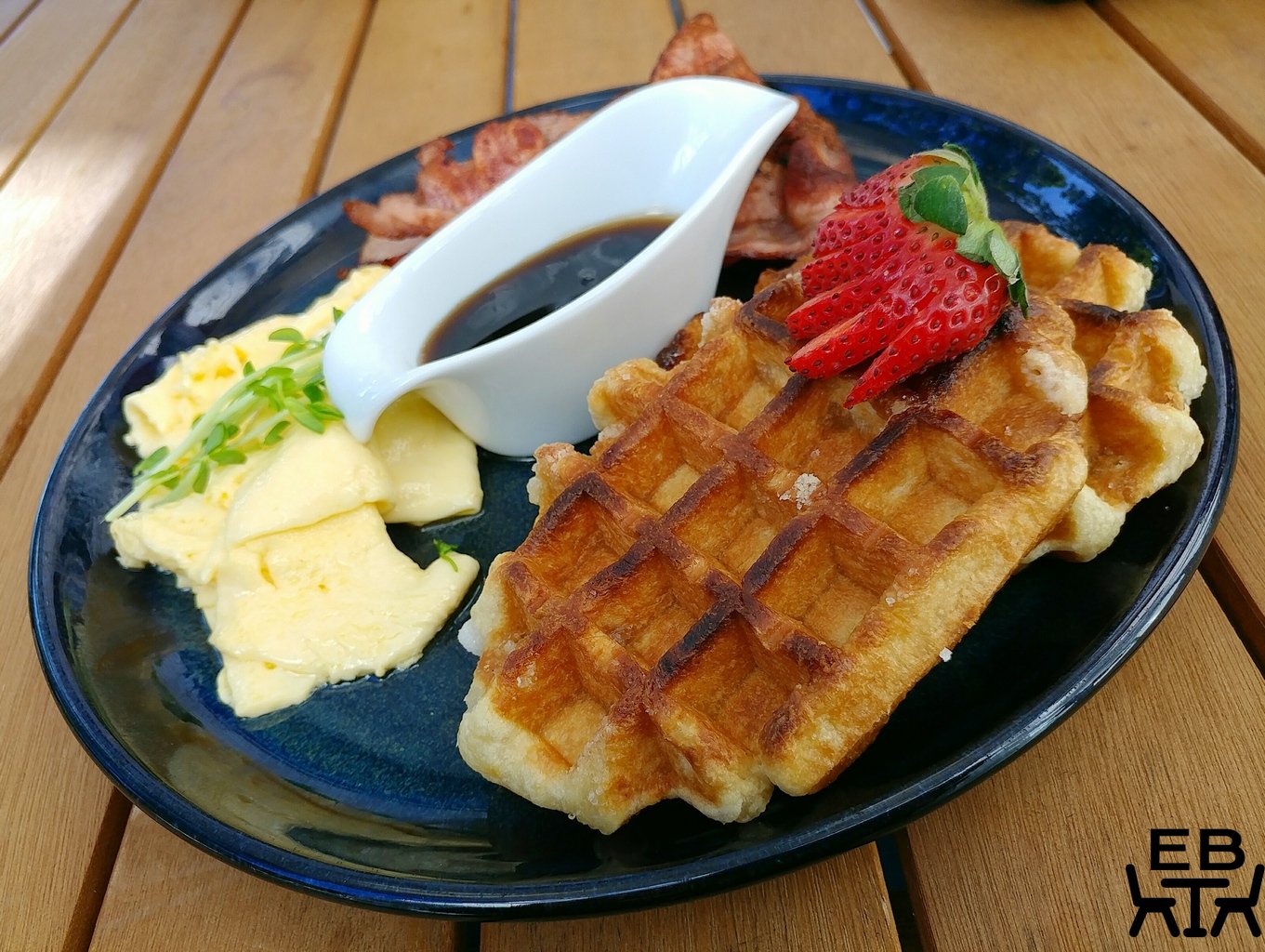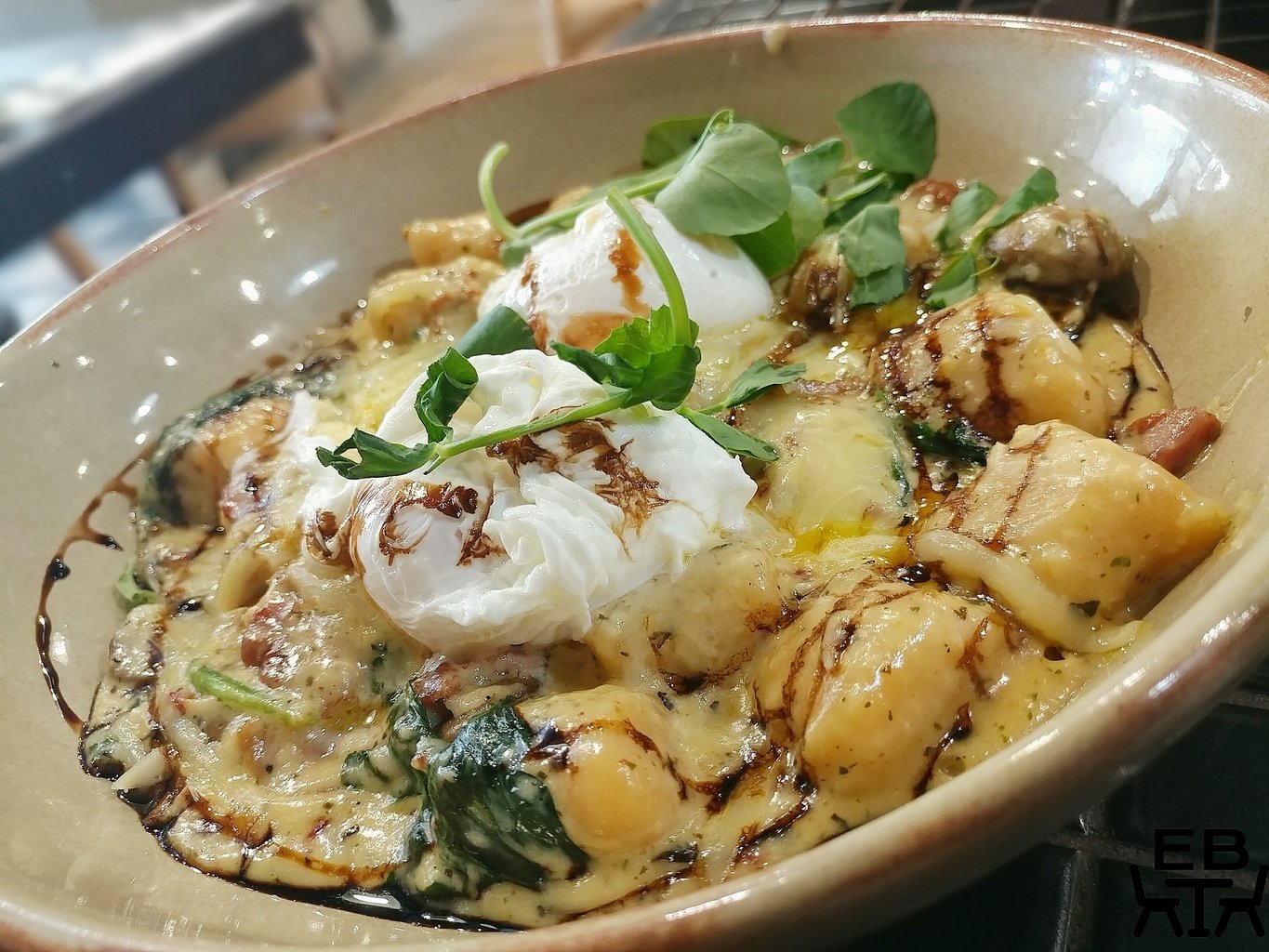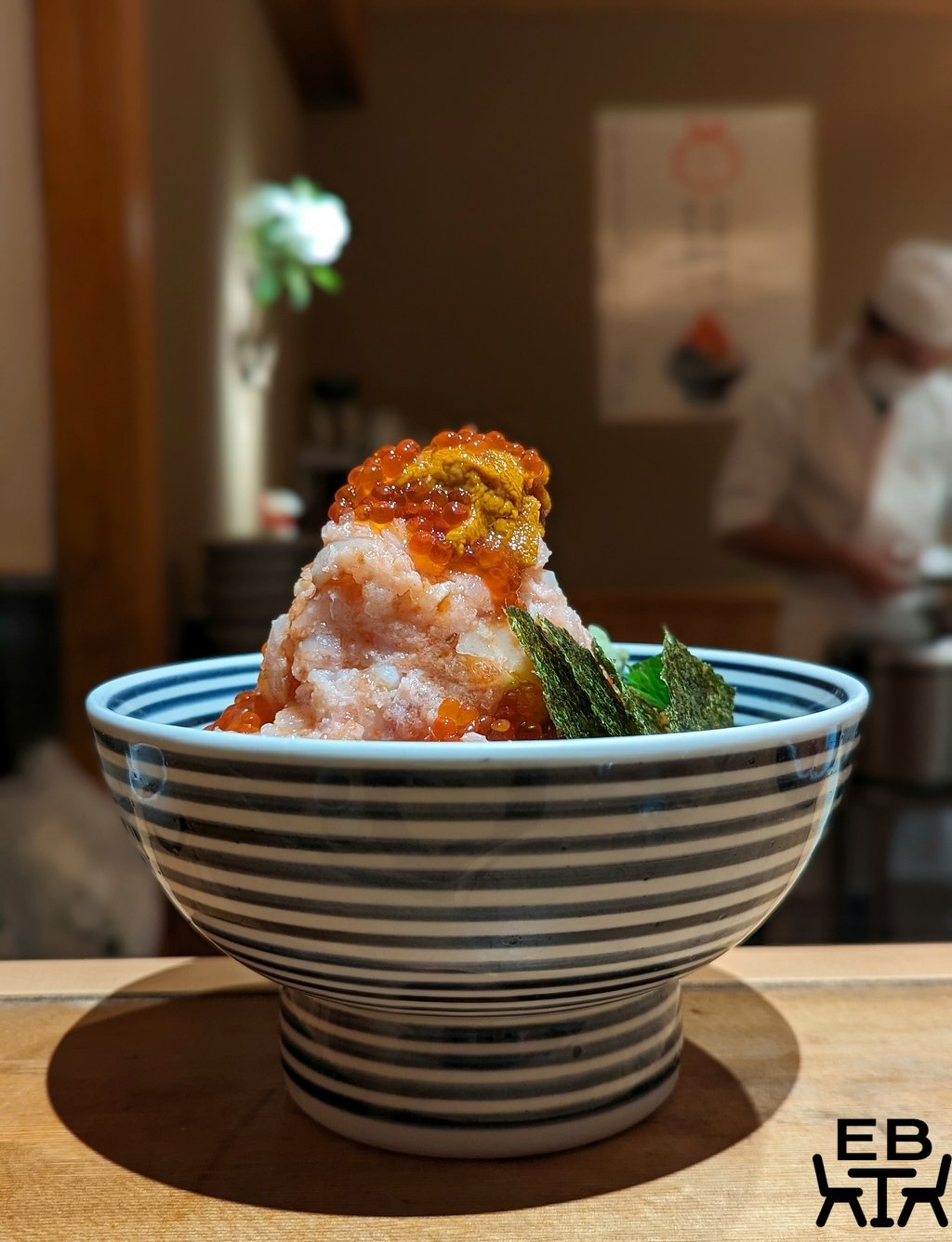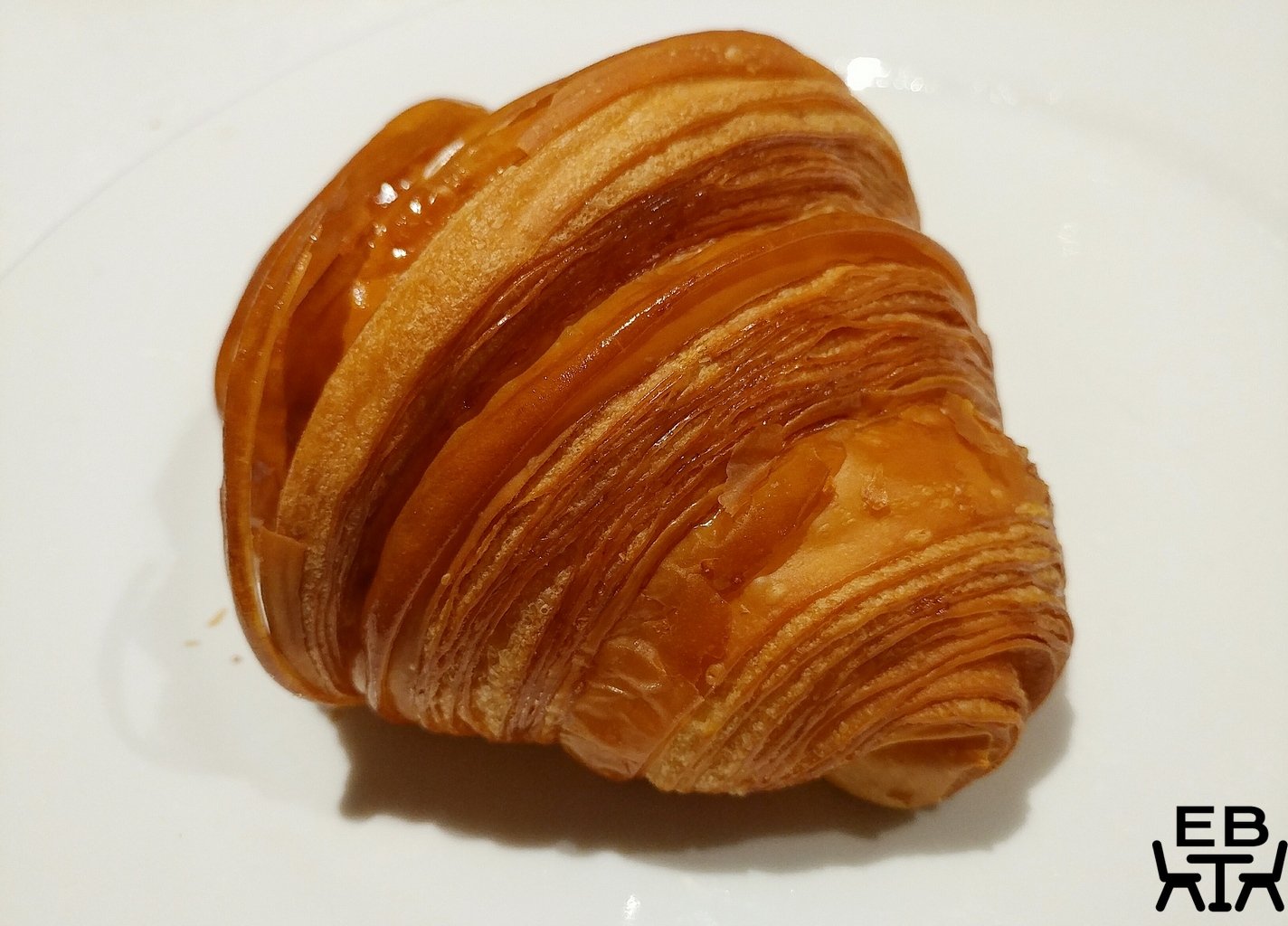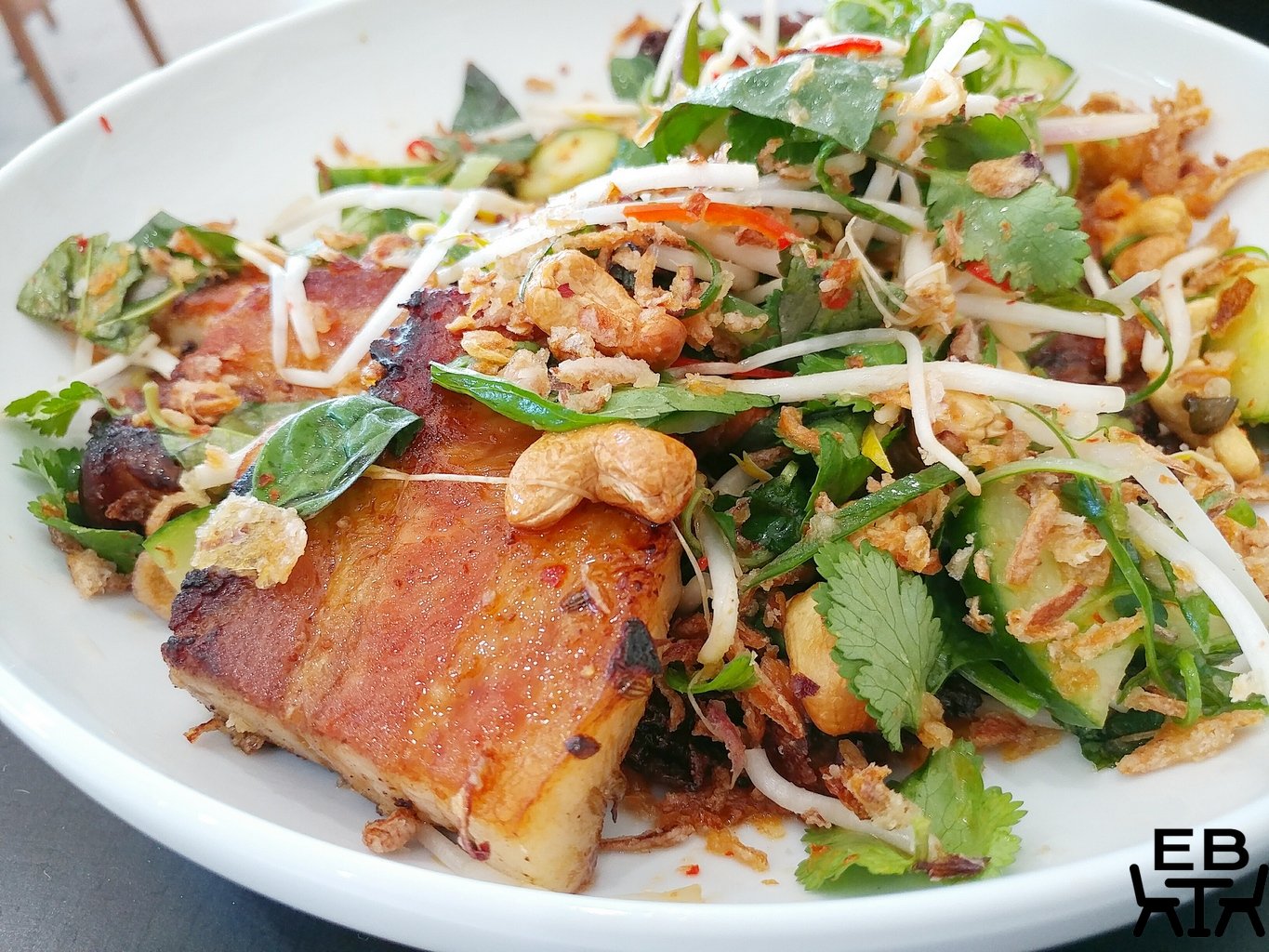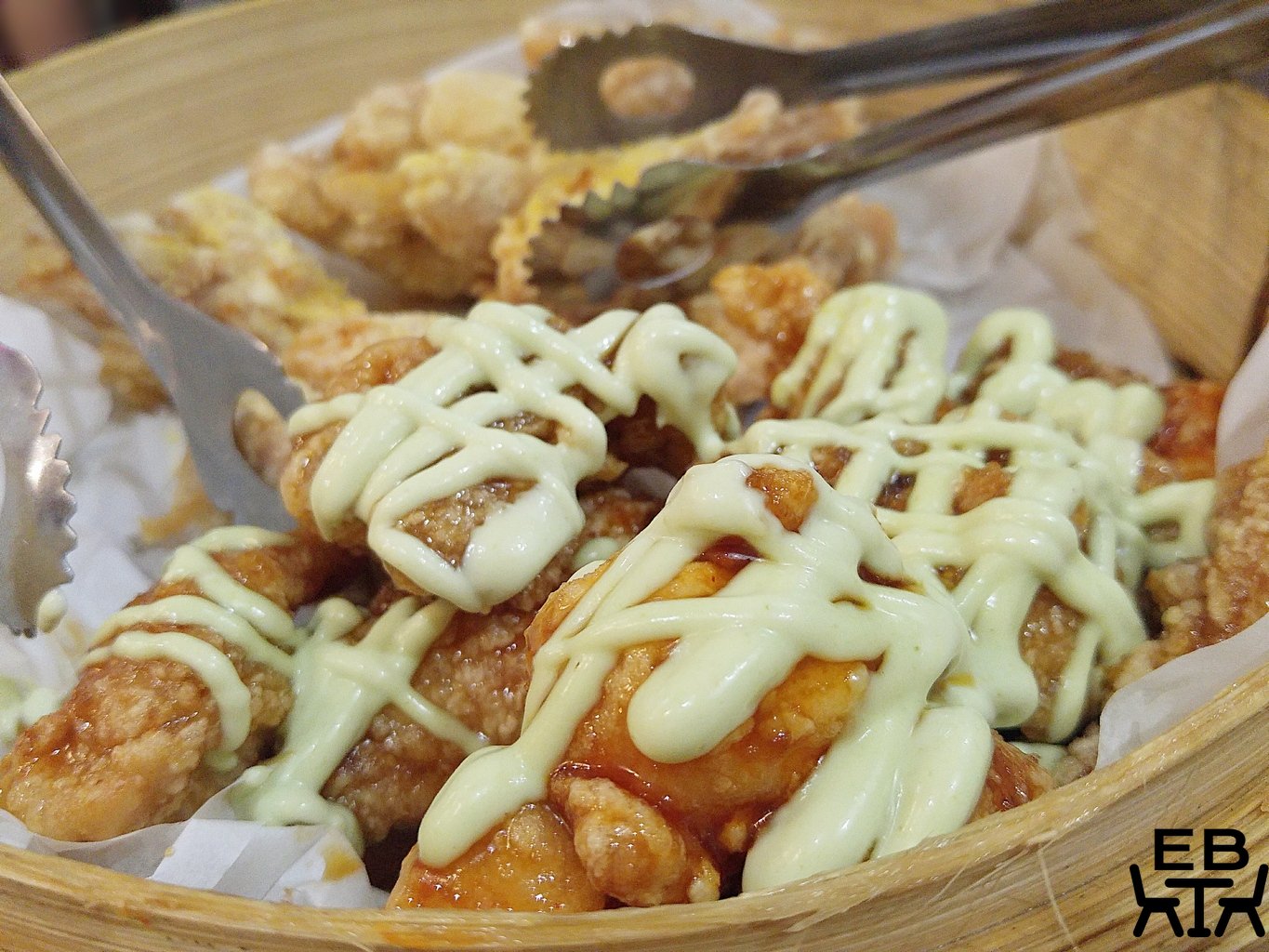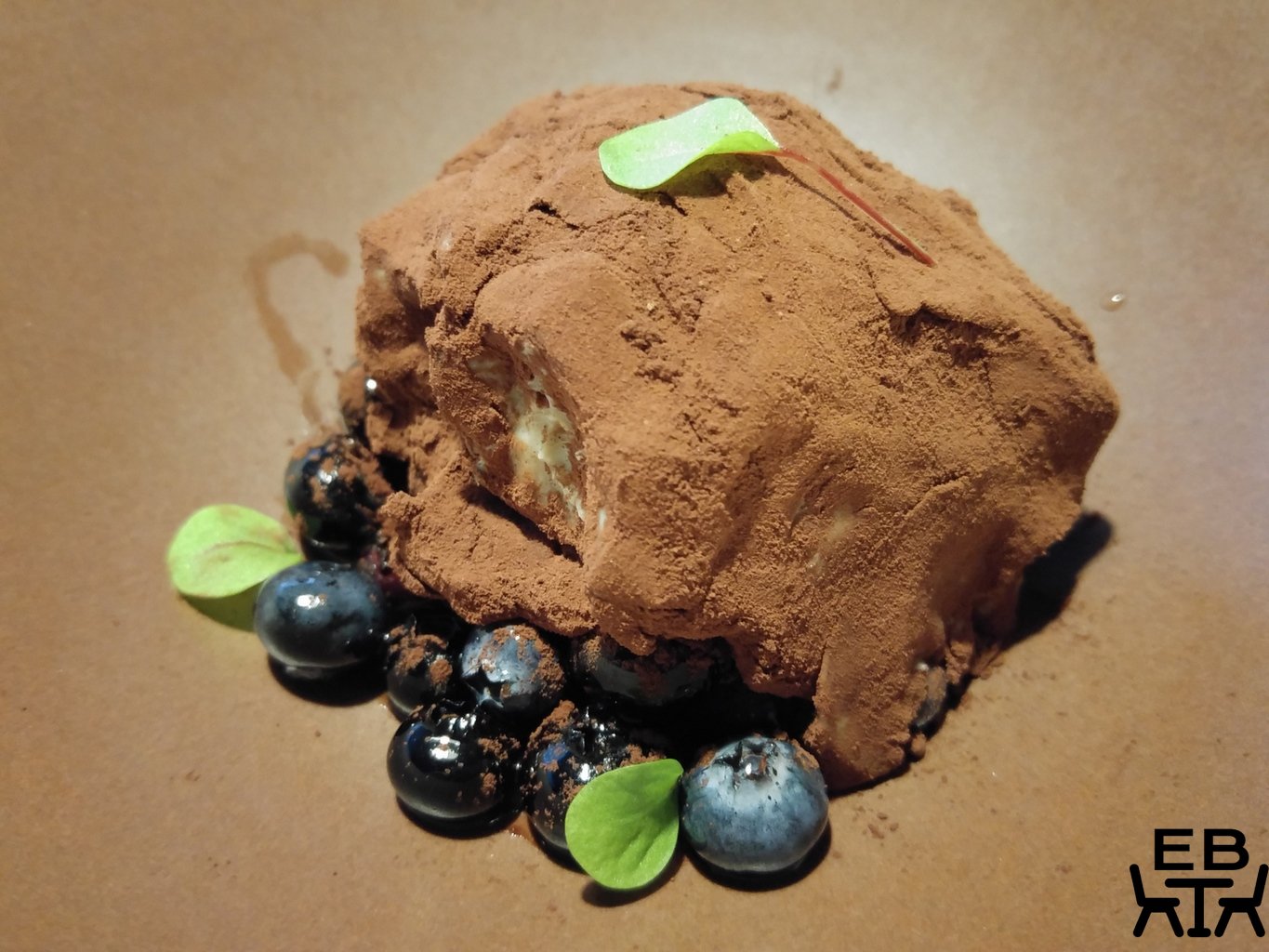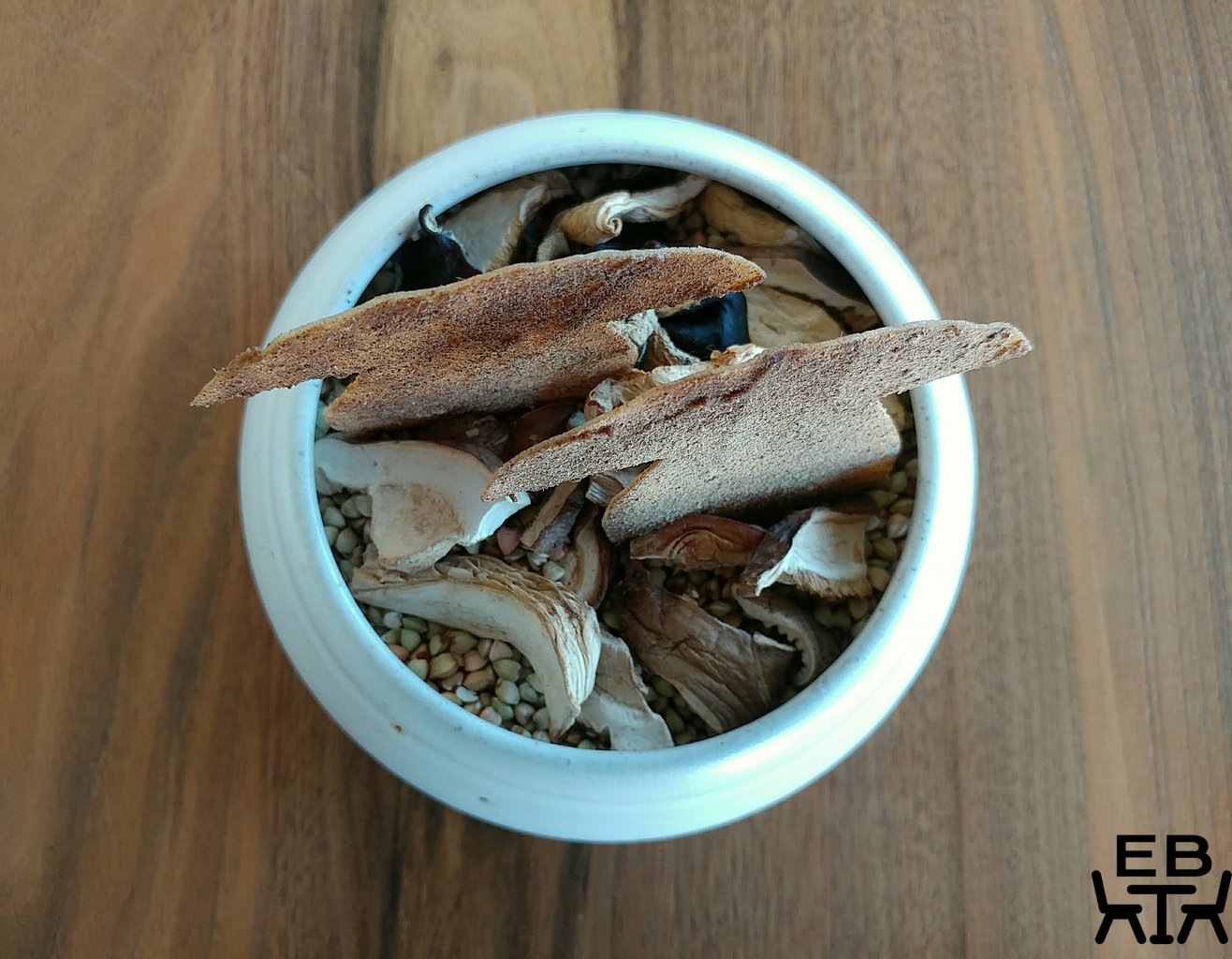One of the great joys of travelling is the unplanned, unexpected, but truly local experiences you stumble upon. Ogawa no Sho was one such discovery when we were wandering in Nagano.
On the way up the main street to visit the Zenkoji Temple (one of the most important Buddhist temples in Japan, and where the first Buddhist statue ever brought to Japan resides), we took a detour into the courtyard area of Patio Daimon Kuraniwa, hoping to find an eatery that wasn’t too packed, our walk across town to get there having worked up a bit of an appetite. It was a pleasant little space, the sunlight filtered by partially autumn-stripped branches of small trees. A few flag banners stood in the courtyard, drawing attention to stores further down the path. We paused at a display in front of one of the doors, which seemed to indicate an available set of a dumpling, tea, and soup, for a reasonable price of 165 to 200¥.

In pre-trip reading, oyaki had come up multiple times as a must eat while in Nagano, being a traditional local food. Finding some was certainly on our list of things to do, and this seemed like a fortuitous find. What we faced, however, was a closed wooden door, and we had no way of telling what the opening hours were. We could just hear faint voices on the other side of the door though, and could make out moving shapes through a tiny gap. Deciding to take a chance, and hoping we weren’t disturbing anyone, we pulled on the round hole that served as the door handle, to find that the half-height wooden panel slid back, making a hobbit-height entrance.

As we hesitantly popped our heads in, we found ourselves facing a large firepit, with a pan suspended from the ceiling over flaming coals. An older man was tending the coals, and an older women was making dumplings at a table beside him (one hesitates to guess peoples’ actual ages). The movement and sound of the door opening must have drawn their attention, as they looked up from what they were doing. We were waved in.
Stepping through the door, we could now see that on the right side of the room were a couple of long communal tables where a couple of other people were seated and eating. The older man and woman spoke barely any English, and we spoke barely any Japanese, but trays to the side of the firepit had some recently cooked oyaki, and with hand gestures, they indicated that those could be bought, and how much they were. Wooden plaques said what the fillings were. Some of the characters could be deciphered to work out that one row was filled with local wild vegetables. They said the words “Adzuki”, pointing to another row, and we knew that those were red bean. We didn’t manage to figure out what the other ones were, but figured the best way to find out would be by eating them.
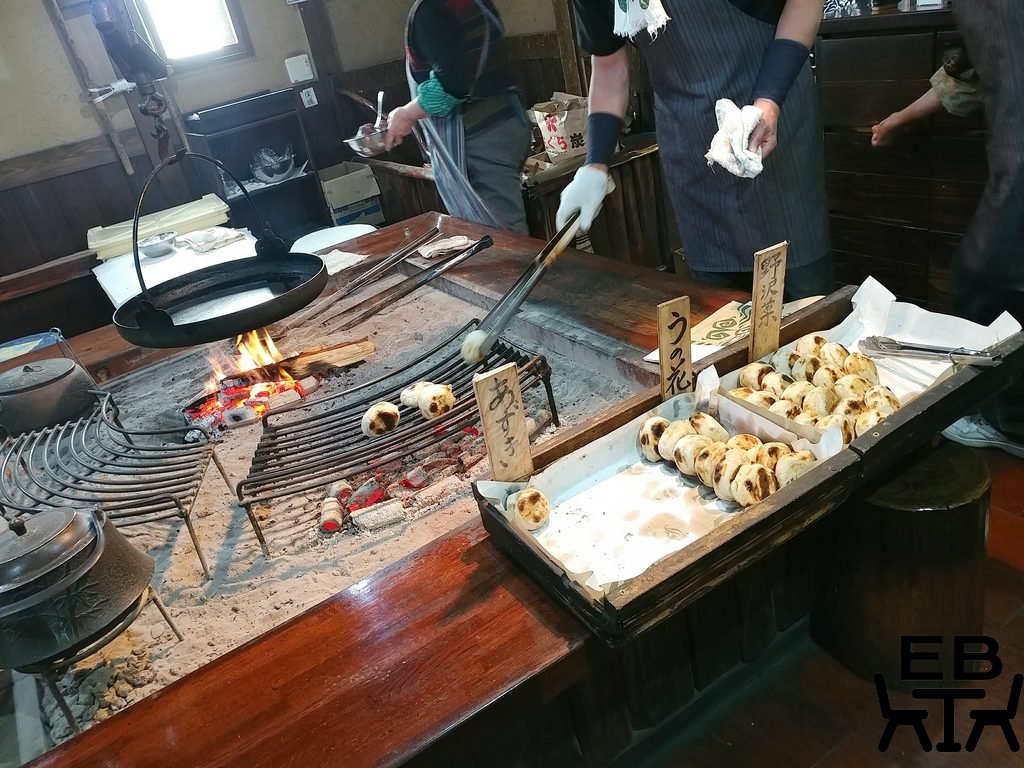
Once we had indicated which ones we wanted, they placed the oyaki on a paper-lined woven tray, and gestured to us to take a seat wherever we wished. Still freezing from the cold outside, and wanting to watch the oyaki being made, we opted for one of the seats ringing the firepit. One of the staff kindly brought us bowls of miso soup and cups of tea (from what we observed, other patrons served themselves from large flasks at one side of the room, but they might have figured that trying to explain that to us would be complicated).
The first oyaki we had was the one filled with local wild vegetables. From our prior reading, the pickled Nozawana (a local leafy green) is a traditional and popular local food, so we had to try it. It was still piping hot, as a batch had just been taken off the coals and placed in the tray. The exterior had a slight crunch where it was fire-browned, and had a slightly bready chew, but because it was thin, it wasn’t doughy. It was generously filled with the Nozawana mix. The leaves were cut into small pieces, but still retained texture. They were savoury and slightly pickly, and slick with sauce but not sloppy. It was definitely more-ish.
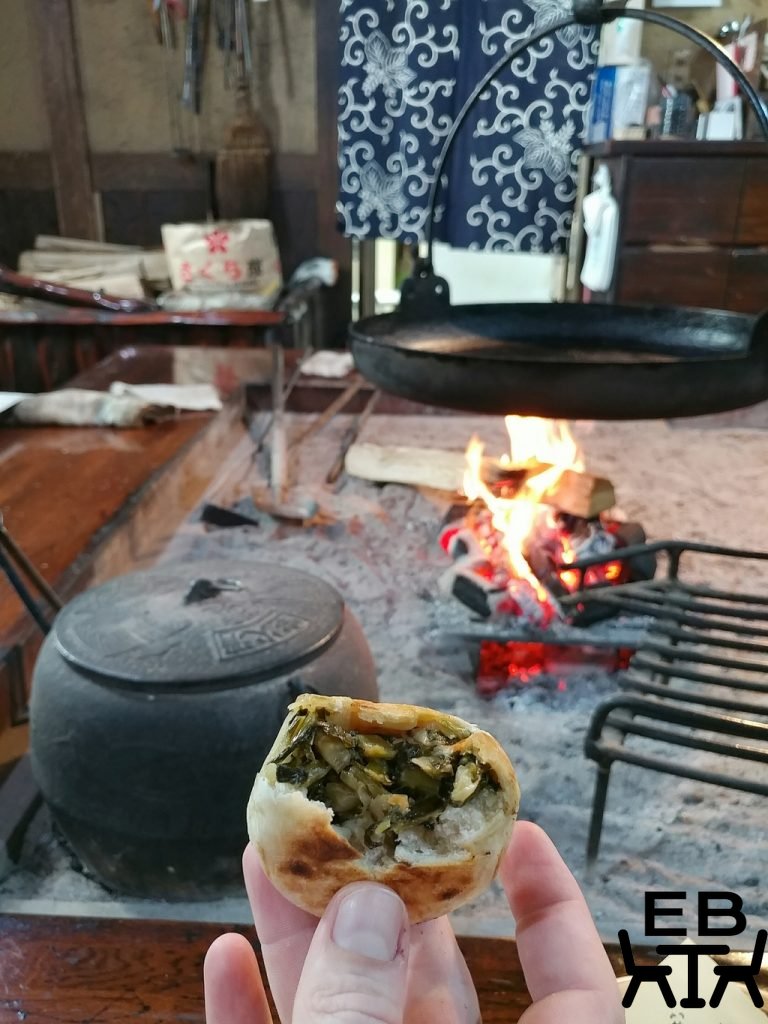
The next oyaki we had (we certainly weren’t going to stop at one) had a different vegetable filling, a yellower mix of what seemed like cooked down stem parts in thin slices, with a texture similar to cooked leek. This too was tasty, but we preferred the one made with Nozawana.
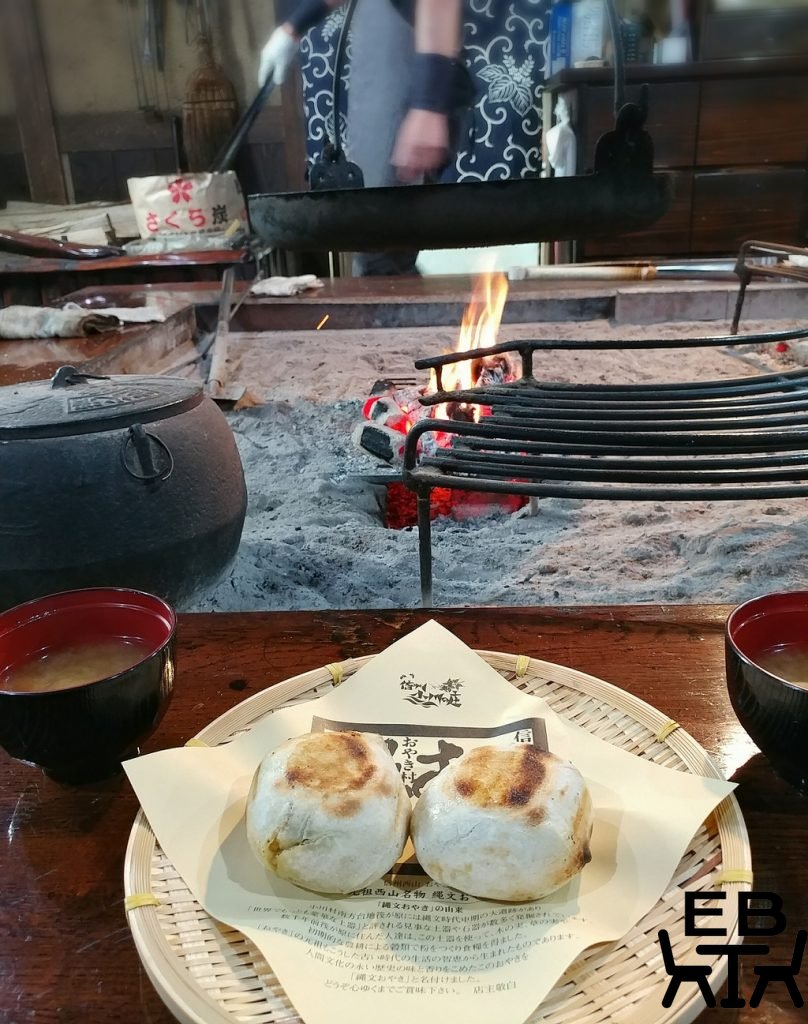
The third oyaki we had was the adzuki-filled one. While usually more of a dessert component, in this case, the red bean mix was only faintly sweet. It was quite a thick paste, textured, with whole and split beans still discernible.
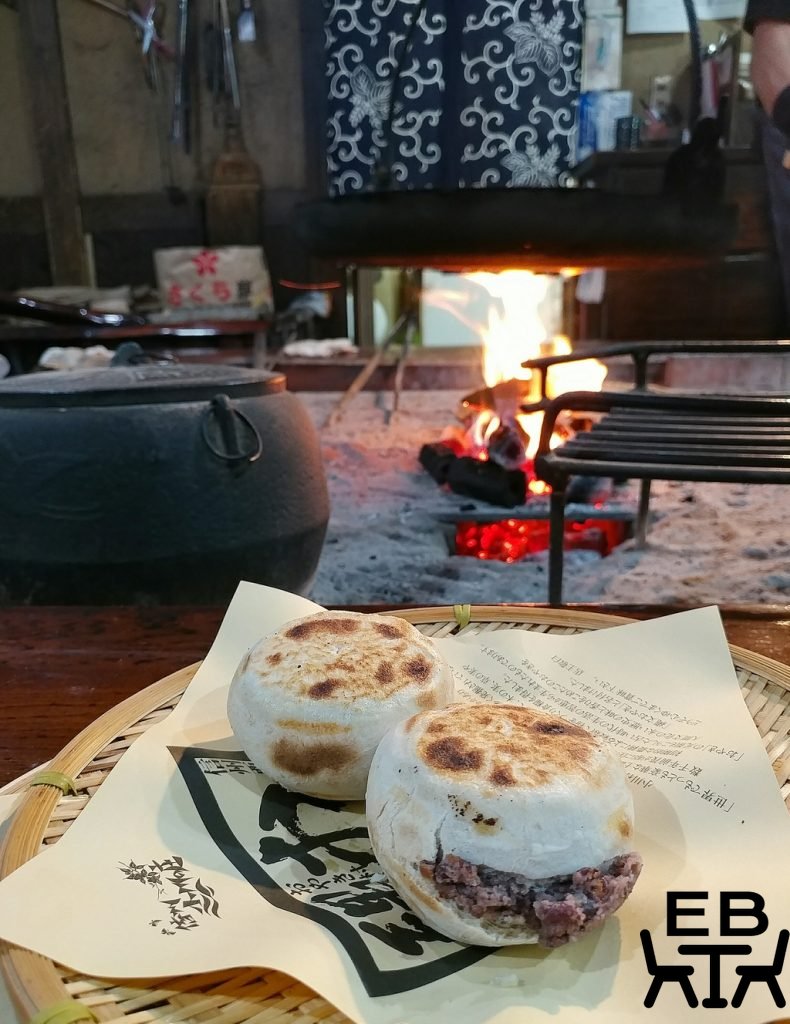
From posters we later came across near one of the entrances to the Patio Daimon, they do have oyaki available with other fillings, perhaps at other tiems. They appeared to be mainly vegetable-based.

We had our oyaki one by one, getting them fresh off the grill as they were cooked. While we were eating them, we watched the painstaking process of them being prepared. The firepit (or irori) was certainly the attention-getter, as people, possibly evolutionarily, can’t help but be mesmerised by fire. The dumplings were cooked in a large, flat pan suspended over the fire, the man tending them turning them over so that they were evenly cooked. He moved them to grills over hot coals to the side of the pit to complete the process, so that the outer skins were roasted and browned. He expertly moved them to different sections on the grill, depending on where the coals were hottest or cooler, and whether the skin of each oyaki needed more or less toasting. He also tended the fire and the coals, feeding the fire with fresh wood pieces, and cycling the coals back through the fire if they were losing heat.
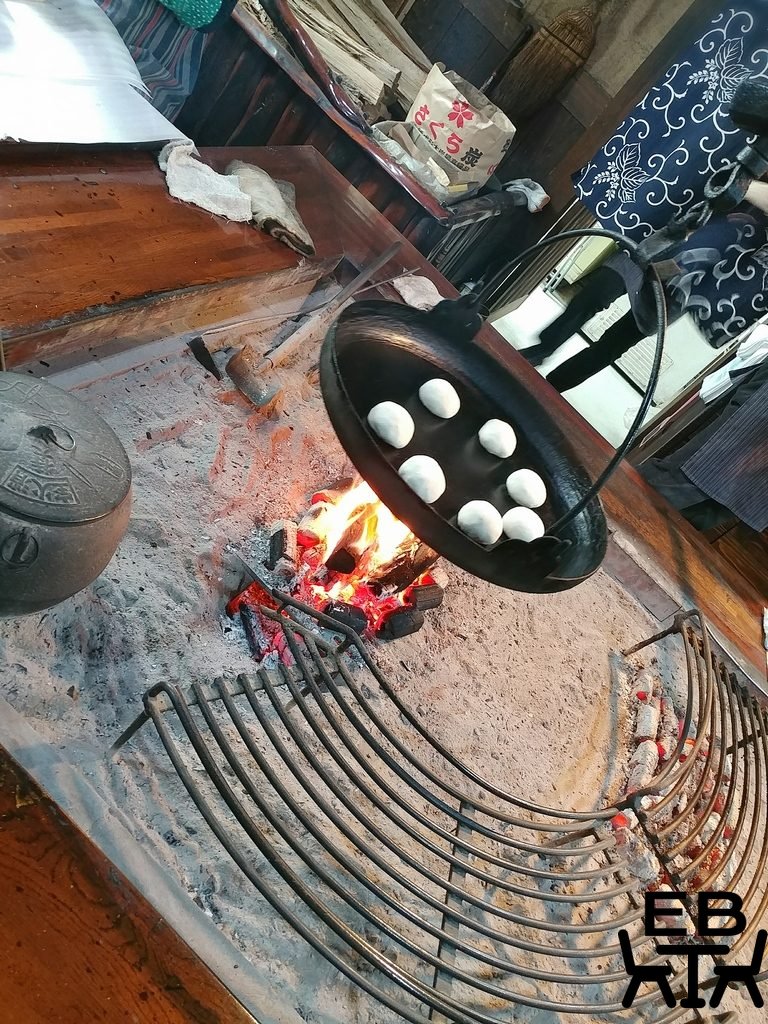
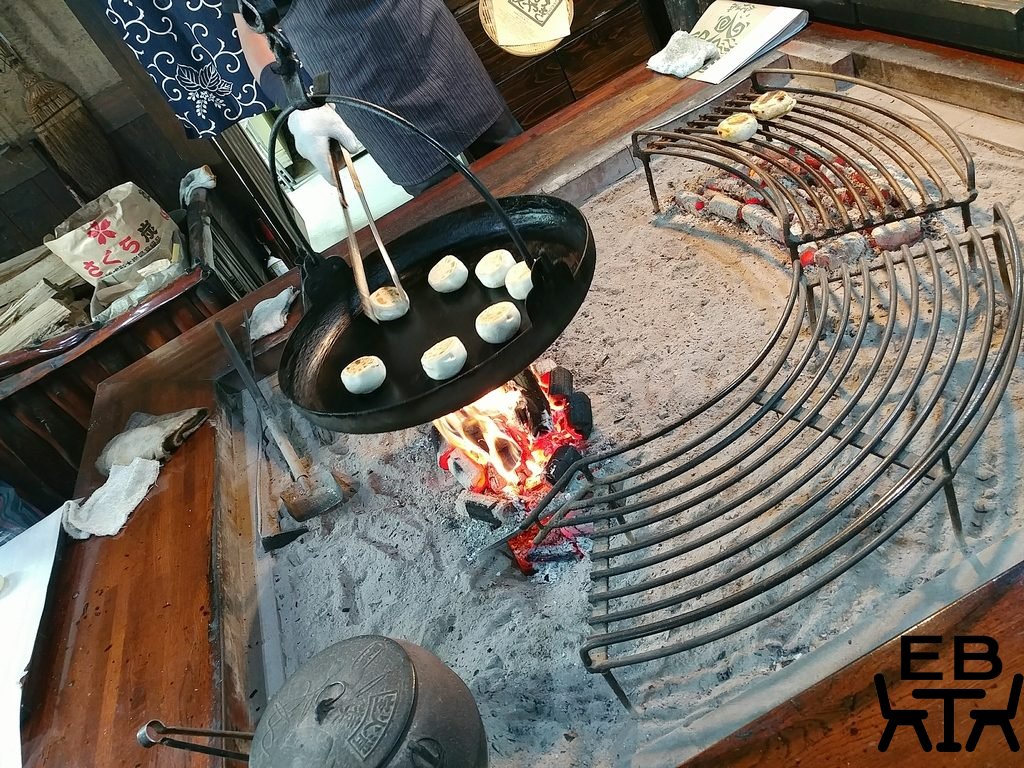
To the side of the irori, less flamboyantly but with no less honed skill, a woman took balls of dough from covered trays, flattened them with her fingers, and pressed just the right amount of filling into them, before folding the dough over so that it enveloped the filling. She then sealed them and shaped them into oblate spheroids. The completed ones were then put on the pan to cook in batches.
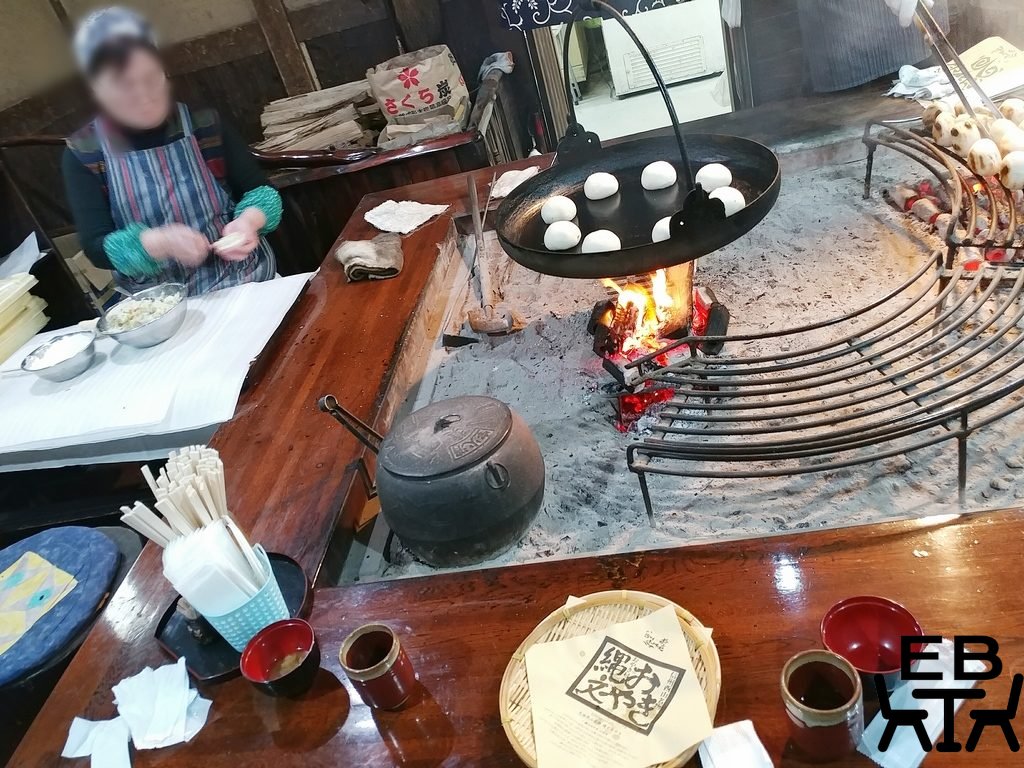
Watching the process of the oyaki being made from scratch was rather meditative, the people working quietly in parallel, each focussed on their tasks, and executing them with practiced ease. It seemed to us to be representative of the Japanese dedication to their craft.

Ogawa No Sho is definitely a stop you should make while in Nagano. It was a great experience as a whole, and those were the best oyaki we had. We did try oyaki from a few other shops on that popular street leading to the temple (Namikase Street), but they weren’t nearly as good, as they were either pre-made and just kept warm in a little toaster oven, or steamed. We found out afterwards that Ogawa No Sho also offers a make your own oyaki experience, so you can have even more of a cultural immersion. (You will have to check the website for details as to how to arrange that though – see the link below.)
Scores:
Food: 3.5/4
Setting: 1.5/2
Service: 2/2
Total: 7/8
Price point: 165 to 200¥ per oyaki.
Value: Great.
Details:
Address: Patio Daimon, 53 Daimon-cho, Nagano 380-0841
Phone: +81-26-232-5786
Website: Ogawa No Sho
